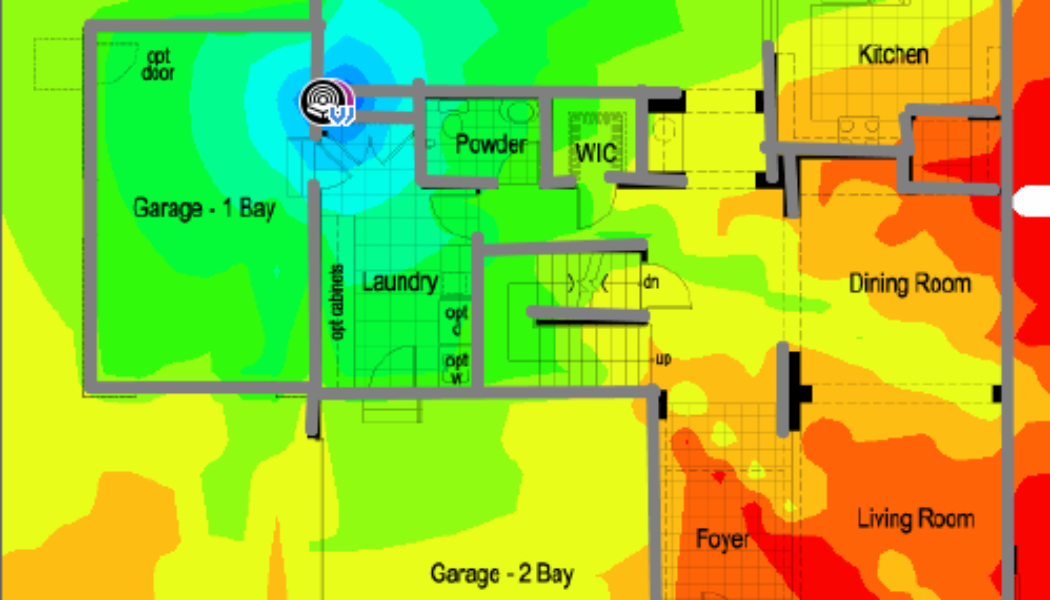We tend to take Wi-Fi for granted at times, expecting it to miraculously work 24/7 and in every room of our homes – even on that remote patio that doesn’t quite reach the wireless router’s signal.
As wireless connectivity runs on radio waves, obstructions and interferences come with the territory, resulting in Wi-Fi dead spots where wireless signals can’t penetrate. This means that your wireless devices won’t pick up Wi-Fi signals in these zones, and you’ll have to move to gain Internet access again – a particularly annoying ordeal if you’ve just settled in a comfy, quiet spot away from your kids or colleagues.
For a frustration-free connection that you can count on, identifying these network dead zones and fixing them is a must. Let’s look at how you can go about doing just that.
Understanding the causes of Wi-Fi dead spots
Most office buildings, apartments, and houses were built before Wi-Fi was developed, so their construction isn’t always conducive to connectivity. Thick plaster walls and supportive metal wiring don’t go hand-in-hand with Wi-Fi radio waves.
Not to mention the fact that the contents of our homes and offices can also hinder signal strength. Large metal appliances like fridges and stoves may block wireless signals, and signal-producing household items like microwaves and baby monitors may interfere with the network.
Other networks in the same neighbourhood may also negatively impact your connection.
Distance from the wireless router also plays a role here – the further a room is from it, the harder it will be to receive a signal. You may even lose the connection completely in remote areas like a basement, balcony or garage.
Detecting network dead zones and assessing your connection
Finding wireless dead spots is as easy as connecting to the Wi-Fi on your smartphone or laptop and walking around your home. While doing so, pay attention to areas where the Wi-Fi signal indicator on the device drops to zero or disconnects entirely. Take note of these areas and others that don’t offer a decent or reliable Wi-Fi signal.
If you are trying to identify dead spots in an office, ask visitors and colleagues for their feedback on which areas are the most difficult to connect to the network. And if you are struggling to pinpoint specific places with poor coverage, get in touch with a network specialist who can assess your connection with tools that map out dead spots and their possible causes.
Resolving wireless dead spots and boosting Wi-Fi performance
Now that you know where the dreaded dead spots are, here are four ways to fix them and reinforce your Wi-Fi coverage in the process.
1. Reposition the router and any potential obstructions
Move your wireless router to a more central location, preferably in the middle of your home, for improved signal strength to all rooms. Or, if certain areas need better connectivity than others, measure their signal strength and be sure to reposition the router as close to these priority areas as possible.
Avoid placing your router in the same vicinity as thick brick walls, metal objects, and other signal blockers. Try rearranging these potential obstructions and test if that eliminates the dead spot.
2. Change the router channel
If your router location doesn’t seem to be the cause of your network problem, try switching the channel on your router to a less congested one. To do this, locate your router settings and test different channels to see which one works best.
There are also Wi-Fi analyser tools available to help you determine the least congested wireless channel for your network without having to compete with other networks in your area.
3. Invest in a Wi-Fi repeater
A Wi-Fi repeater or extender is one of the most popular solves to eliminate dead spots and extend the network’s coverage area. It contains two wireless routers and works by receiving the existing Wi-Fi signal from your original router, amplifying and transferring it to the other router, which then transmits the boosted signal to far-reaching corners of homes and offices. Be sure to check if the repeater is compatible with your existing network before buying it.
4. Upgrade the router
You can have the fastest, most reliable network but if you are running it on old hardware, you will still experience dead spots. If you have an outdated router that you’ve used for many years, or it wasn’t from your ISP and you purchased it yourself, it could be time for an upgrade to a modern, more powerful model.
By Matthew Campbell, Head of SME and FTTH at SEACOM











